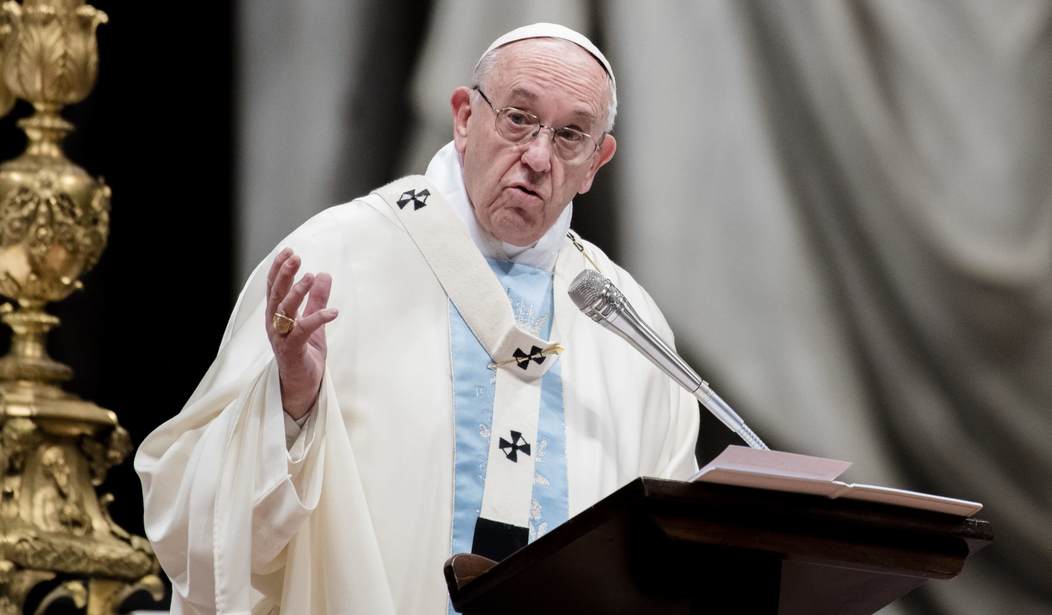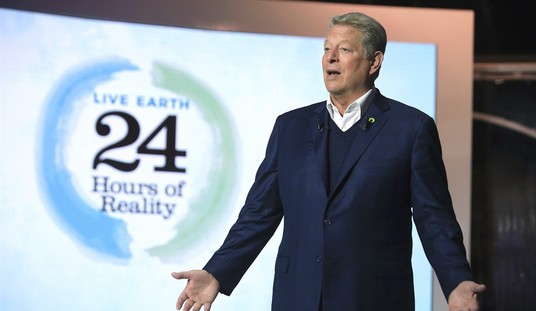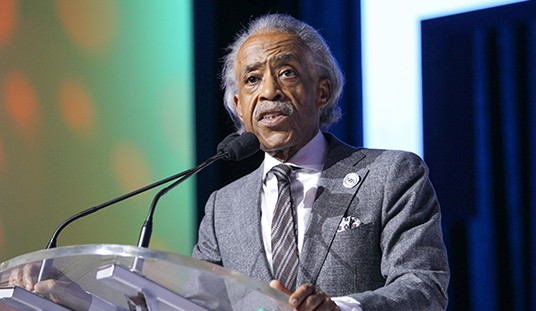For the first time in more than 2,500 years, the religious authority in Rome has decreed that consecrated virgins … need not be virgins. Early this month, Pope Francis declared that physical virginity was not “essential” to becoming a “consecrated virgin.” Actual consecrated virgins attacked this as “shocking,” as did at least one canon lawyer.
“It is shocking to hear from Mother Church that physical virginity may no longer be considered an essential prerequisite for consecration to a life of virginity,” the American Association of Consecrated Virgins (USACV) said in a statement.
The virgins shot down Pope Francis’ document, declaring that “the entire tradition of the Church has firmly upheld that a woman must have received the gift of virginity — that is, both material and formal (physical and spiritual) — in order to receive the consecration of virgins.”
Yet Pope Francis, in his instruction “Ecclesiae Sponsae Imago,” wrote that “the Church’s virginal, spousal and fruitful love for Christ is not reducible to the symbol of physical integrity,” the unbroken hymen. This is true, but Francis went even further.
“Thus to have kept her body in perfect continence or to have practised the virtue of chastity in an exemplary way, while of great importance with regard to the discernment, are not essential prerequisites in the absence of which admittance to consecration is not possible,” Francis wrote.
This seems to conflict with the official “Rite of Consecration to a Life of Virginity,” which this teaching did not change. The USACV presented a literal translation of the Latin:
Those Women to Whom the Virginal Consecration May be Imparted: a) In the case of virgins leading lives in the world it is required that they have never celebrated marriage and that they have not publicly or manifestly lived in a state contrary to chastity.
For nearly 2,000 years, “the Church has sought to guard the integrity of consecrated virginity and the uniquely virginal eschatological sign it represents.”
“In stating that the virgin seeking consecration must ‘have not publicly or manifestly lived in a stated contrary to chastity,’ the criterion is specifying that virginity is a minimum requirement for consecration,” the USACV wrote. “There are some egregious violations of chastity that, even if not strictly violating virginity, would disqualify a woman from receiving the consecration of virgins.”
“The first admission criterion is meant to uphold the integrity of the vocation and to protect the woman who desires perpetual consecration as a virgin-bride of Jesus Christ,” the virgins wrote.
The canon lawyer Edward Peters also condemned Pope Francis’ teaching as “simply stunning.” He noted that Francis struck down the “straw man of ‘physical integrity’ (basically an intact hymen).”
“But then, having rightly warned the reader not to focus on ‘physical integrity’ as if that were virginity, ESI immediately substitutes ‘perfect continence’ — another unfamiliar term but one describing a situation that, if verified, would satisfy as proof of virginity! — and rejects it as being necessary for admission to the order of virgins,” Peters explained.
“I know of no ecclesiastical document in history, until Ecclesiae Sponsae Imago, that directly and effectively denies that virginity is required for one’s consecration as a virgin,” the canon lawyer wrote.
This is a serious matter of Roman Catholic jurisprudence. “If a single act of sexual intercourse suffices juridically for consummation of a marriage (and it does), then why should not a single act of sexual intercourse suffice juridically for the loss of virginity that prevents consecration as a virgin?”
The practice of consecrating virgins in Rome traces back to roughly 700 B.C. with the Roman pontiff’s inception of the Pagan Vestal Virgins. In Christianity, the practice took on added significance, since the Virgin Mary gave birth to Jesus Christ, the Son of God. Roman Catholics believe Mary remained a virgin after Jesus’ birth.
More than that, the USACV pointed out that in the right of consecration to a life of virginity, “a woman is consecrated as ‘bride of Christ,’ so that she might be ‘an eschatological image of the world to come and the heavenly Bride of Christ.'”
The Apostle Paul often described the church universal — all Christian believers — as being betrothed to Christ (Ephesians 5, II Corinthians 11), and both Jesus Himself and John in Revelation described an upcoming “wedding feast,” an image of Christians enjoying the eternal joys of heaven. Paul writes of his wish to present the church as a “spotless virgin.”
Christians believe that sexual intercourse outside of marriage between one man and one woman is a sin. The grace of God through Jesus Christ redeems sinful people, but the Roman Catholic institution of consecrated virgins is meant to echo both the virginity of the Virgin Mary and Paul’s desire to present the church as the “spotless virgin” bride of Jesus Christ.
Peters, the canon lawyer, noted the absurdity of removing the requirement for virginity with a Bible reference. Under Pope Francis’ teaching, “Mary Magdalene, extreme in her sins but outstanding in her repentance, seems eligible for consecration as a virgin.” According to Catholic tradition, Mary Magdalene was a prostitute before she repented and followed Jesus. For her to be able to join an order of virgins is patently absurd.
While Christians believe redemption is possible, and many would say that those who have committed sexual sin can later become “virgins in Christ,” this teaching painfully contrasts with Catholic tradition. The miracle of the Incarnation — Jesus’ birth celebrated at Christmas — relies on the fact that Mary was a virgin in the physical and spiritual senses.
As the USACV noted, Pope Francis’ teaching did not alter the rite for inducting consecrated virgins. Even so, his document is confusing in the extreme.









Join the conversation as a VIP Member